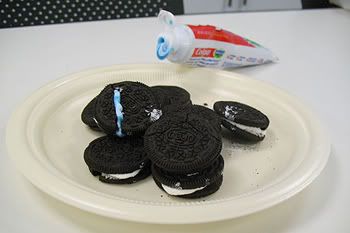St. Patrick's Day – Celebrating the Green

St. Patrick is believed to have driven the snakes from Ireland. Once a pagan himself, St. Patrick is one of Christianity's most widely known figures.
The modern secular holiday is based on the original Christian saint's feast day also thought to be the date of the saint's death. In 1737, Irish immigrants to the United States began observing the holiday publicly in Boston and held the first St. Patrick's Day Parade in New York City in 1766.
Today, the tradition continues with people from all walks and heritages by wearing green, eating Irish food, and attending parades. St. Patrick's Day is bursting with folklore; from the shamrock to the leprechaun and to pinching those that are not wearing green.
THE FIRST PARADE
St. Patrick's Day is celebrated on March 17, his religious feast day and the anniversary of his death in the fifth century. The Irish have observed this day as a religious holiday for thousands of years.
On St. Patrick's Day, which falls during the Christian season of Lent, Irish families would traditionally attend church in the morning and celebrate in the afternoon. Lenten prohibitions against the consumption of meat were waived and people would dance, drink, and feast—on the traditional meal of Irish bacon and cabbage.
The first St. Patrick's Day parade took place not in Ireland, but in the United States. Irish soldiers serving in the English military marched through New York City on March 17, 1762. Along with their music, the parade helped the soldiers to reconnect with their Irish roots, as well as fellow Irishmen serving in the English army.
Over the next thirty-five years, Irish patriotism among American immigrants flourished, prompting the rise of so-called "Irish Aid" societies, like the Friendly Sons of Saint Patrick and the Hibernian Society. Each group would hold annual parades featuring bagpipes (which actually first became popular in the Scottish and British armies) and drums.
NO IRISH NEED APPLY
Up until the mid-nineteenth century, most Irish immigrants in America were members of the Protestant middle class. When the Great Potato Famine hit Ireland in 1845, close to a million poor, uneducated, Catholic Irish began to pour into America to escape starvation. Despised for their religious beliefs and funny accents by the American Protestant majority, the immigrants had trouble finding even menial jobs. When Irish Americans in the country's cities took to the streets on St. Patrick's Day to celebrate their heritage, newspapers portrayed them in cartoons as drunk, violent monkeys.
However, the Irish soon began to realize that their great numbers endowed them with a political power that had yet to be exploited. They started to organize, and their voting block, known as the "green machine," became an important swing vote for political hopefuls. Suddenly, annual St. Patrick's Day parades became a show of strength for Irish Americans, as well as a must-attend event for a slew of political candidates. In 1948, President Truman attended New York City 's St. Patrick's Day parade, a proud moment for the many Irish whose ancestors had to fight stereotypes and racial prejudice to find acceptance in America.
WEARING OF THE GREEN GOES GLOBAL
Today, St. Patrick's Day is celebrated by people of all backgrounds in the United States, Canada, and Australia. Although North America is home to the largest productions, St. Patrick's Day has been celebrated in other locations far from Ireland, including Japan, Singapore, and Russia.
In modern-day Ireland, St. Patrick's Day has traditionally been a religious occasion. In fact, up until the 1970s, Irish laws mandated that pubs be closed on March 17. Beginning in 1995, however, the Irish government began a national campaign to use St. Patrick's Day as an opportunity to drive tourism and showcase Ireland to the rest of the world. Last year, close to one million people took part in Ireland 's St. Patrick's Festival in Dublin, a multi-day celebration featuring parades, concerts, outdoor theater productions, and fireworks shows.

THE CHICAGO RIVER
Chicago is also famous for a somewhat peculiar annual event: dyeing the Chicago River green. The tradition started in 1962, when city pollution-control workers used dyes to trace illegal sewage discharges and realized that the green dye might provide a unique way to celebrate the holiday. That year, they released 100 pounds of green vegetable dye into the river—enough to keep it green for a week!
Today, in order to minimize environmental damage, only forty pounds of dye are used, making the river green for only several hours. Although Chicago historians claim their city 's idea for a river of green was original, some Savannah natives believe the idea originated in their town.
They point out that 1961, Savannah mayor Tom Woolley had plans for a green river, but due to rough water on March 17, the experiment didn 't work and Savannah never attempted to dye its river again.
THE SHAMROCK
In fact the first written mention of this story did not appear until nearly a thousand years after Patrick's death.
The shamrock, which was also called the "seamroy" by the Celts, was a sacred plant in ancient Ireland because it symbolized the rebirth of spring. By the seventeenth century, the shamrock had become a symbol of emerging Irish nationalism. As the English began to seize Irish land and make laws against the use of the Irish language and the practice of Catholicism, many Irish began to wear the shamrock as a symbol of their pride in their heritage and their displeasure with English rule.
IRISH MUSIC
Music is often associated with St. Patrick's Day—and Irish culture in general. From ancient days of the Celts, music has always been an important part of Irish life. The Celts had an oral culture, where religion, legend, and history were passed from one generation to the next by way of stories and songs.
After being conquered by the English, and forbidden to speak their own language, the Irish, like other oppressed peoples, turned to music to help them remember important events and hold on to their heritage and history. As it often stirred emotion and helped to galvanize people, music was outlawed by the English. During her reign,Queen Elizabeth I even decreed that all artists and pipers were to be arrested and hanged on the spot.
Today, traditional Irish bands like The Chieftains, the Clancy Brothers, and Tommy Makem are gaining worldwide popularity. Their music is produced with instruments that have been used for centuries, including the fiddle, the uilleann pipes (a sort of elaborate bagpipe), the tin whistle (a sort of flute that is actually made of nickel-silver, brass, or aluminum), and the bodhran (an ancient type of framedrum that was traditionally used in warfare rather than music).
THE SNAKE
It has long been recounted that, during his mission in Ireland, St. Patrick once stood on a hilltop (which is now called Croagh Patrick), and with only a wooden staff by his side, banished all the snakes from Ireland.
In fact, the island nation was never home to any snakes. The "banishing of the snakes" was really a metaphor for the eradication of pagan ideology from Ireland and the triumph of Christianity. Within two hundred years of Patrick's arrival, Ireland was completely Christianized.
ST. PATRICK'S DAY RECIPES
Everyone is a little bit Irish on St. Patrick's Day!
You can eat like an Irishman too! Try these recipes for some mouthwatering cuisine.
IRISH SODA BREAD WITH RAISINS
Nonstick vegetable oil spray
2 cups all purpose flour
5 tablespoons sugar, divided
1 1/2 teaspoons baking powder
1 teaspoon salt
3/4 teaspoon baking soda
3 tablespoons butter, chilled, cut into cubes
1 cup buttermilk
2/3 cup raisins
Preheat oven to 375°F. Spray 8-inch-diameter cake pan with nonstick spray. Whisk flour, 4 tablespoons sugar, baking powder, salt, and baking soda in large bowl to blend. Add butter. Using fingertips, rub in until coarse meal forms. Make well in center of flour mixture. Add buttermilk. Gradually stir dry ingredients into milk to blend. Mix in raisins.
Using floured hands, shape dough into ball. Transfer to prepared pan and flatten slightly (dough will not come to edges of pan). Sprinkle dough with remaining 1 tablespoon sugar.
Bake bread until brown and tester inserted into center comes out clean, about 40 minutes. Cool bread in pan 10 minutes. Transfer to rack. Serve warm or at room temperature.
IRISH BROWN BREAD
2 cups whole-wheat flour
2 cups all-purpose flour plus additional for kneading
1/2 cup toasted wheat germ
2 teaspoons salt
2 teaspoons sugar
1 teaspoon baking soda
1/2 teaspoon cream of tartar
1 stick (1/2 cup) cold unsalted butter, cut into 1/2-inch cubes
2 cups well-shaken buttermilk
Put oven rack in middle position and preheat oven to 400°F. Butter a 9- by 2-inch round cake pan.
Whisk together flours, wheat germ, salt, sugar, baking soda, and cream of tartar in a large bowl until combined well. Blend in butter with a pastry blender or your fingertips until mixture resembles coarse meal. Make a well in center and add buttermilk, stirring until a dough forms. Gently knead on a floured surface, adding just enough more flour to keep dough from sticking, until smooth, about 3 minutes.
Transfer dough to cake pan and flatten to fill pan. With a sharp knife, cut an X (1/2 inch deep) across top of dough (5 inches long). Bake until loaf is lightly browned and sounds hollow when bottom is tapped, 30 to 40 minutes. Cool in pan on a rack 10 minutes, then turn out onto rack and cool, right side up, about 1 hour.
Cooks' notes:
" Bread can be served the day it is made, but it slices more easily if kept, wrapped in plastic wrap, at room temperature 1 day.
" Leftover bread keeps, wrapped in plastic wrap, at room temperature 4 days.
CORNED BEEF AND CABBAGE
5 pounds corned brisket of beef
6 peppercorns, or packaged pickling spices
3 carrots, peeled and quartered
3 onions, peeled and quartered
1 medium-sized green cabbage, quartered or cut in wedges
Melted butter (about 4 tablespoons)
Place the corned beef in water to cover with the peppercorns or mixed pickling spices (in supermarkets, these often come packaged with the corned beef). Cover the pot or kettle, bring to a boil, reduce heat and simmer 5 hours or until tender, skimming occasionally. During the last hour, add the carrots and onions and cover again. During the last 15 minutes, add the cabbage. Transfer meat and vegetables to a platter and brush the vegetables with the melted butter. Serve with boiled parsley potatoes, cooked separately. (The stock can be saved to add to a pot roast or stew instead of other liquid.)
CHAMP
2 pounds russet potatoes, peeled, cut into 1-inch pieces
1/2 cup whipping cream
1/4 cup (1/2 stick) butter
Cook potatoes in pot of boiling salted water until very tender, about 15 minutes.
Meanwhile, bring cream and butter to simmer in heavy small saucepan over medium heat, stirring often. Mix in green onions. Remove from heat. Cover and let steep while potatoes cook.
Drain potatoes thoroughly. Return potatoes to same pot and mash. Add cream mixture and stir until blended. Season to taste with salt and pepper. (Can be prepared 2 hours ahead. Cover; let stand at room temperature. Rewarm over low heat, stirring often.)
1 bunch green onions, sliced (about 1 1/3 cups)
BEEF AND GUINNESS PIE
2 lb boneless beef chuck, cut into 1-inch pieces
2 tablespoons all-purpose flour
1 teaspoon salt
1/2 teaspoon black pepper
2 tablespoons vegetable oil
1 large onion, coarsely chopped
2 garlic cloves, chopped
3 tablespoons water
1 1/2 tablespoons tomato paste
1 cup beef broth
1 cup Guinness or other Irish stout
1 tablespoon Worcestershire sauce
2 teaspoons drained brined green peppercorns, coarsely chopped
2 fresh thyme sprigs
Rough puff pastry dough
1 large egg, lightly beaten
1 tablespoon water
Special equipment: 4 (14-oz) deep bowls or ramekins (4 to 5 inches wide; see Shopping List, page 301) or similar-capacity ovenproof dishes
Put oven rack in middle position and preheat oven to 350°F.
Pat beef dry. Stir together flour, salt, and pepper in a shallow dish. Add beef, turning to coat, then shake off excess and transfer to a plate. Heat oil in a wide 5- to 6-quart ovenproof heavy pot over moderately high heat until just smoking, then brown meat in 3 batches, turning occasionally, about 5 minutes per batch, transferring to a bowl.
Add onion, garlic, and water to pot and cook, scraping up any brown bits from bottom of pot and stirring frequently, until onion is softened, about 5 minutes. Add tomato paste and cook, stirring, 1 minute. Stir in beef with any juices accumulated in bowl, broth, beer, Worcestershire sauce, peppercorns, and thyme and bring to a simmer, then cover and transfer to oven. Braise until beef is very tender and sauce is thickened, about 1 1/4 to 1 1/2 hours. Discard thyme and cool stew completely, uncovered, about 30 minutes. (If stew is warm while assembling pies, it will melt uncooked pastry top.)
Put a shallow baking pan on middle rack of oven and increase oven temperature to 425°F.
Divide cooled stew among bowls (they won't be completely full). Roll out pastry dough on a lightly floured surface with a lightly floured rolling pin into a 13-inch square, about 1/8 inch thick. Trim edges and cut dough into quarters. Stir together egg and water and brush a 1-inch border of egg wash around each square. Invert 1 square over each bowl and drape, pressing sides lightly to help adhere. Brush pastry tops with some of remaining egg wash and freeze 15 minutes to thoroughly chill dough.
Bake pies in preheated shallow baking pan until pastry is puffed and golden brown, about 20 minutes.
Reduce oven temperature to 400°F and bake 5 minutes more to fully cook dough.
Cooks' note: Stew (without pastry) can be made 2 days ahead, cooled completely, and chilled, covered. Bring to room temperature before using.
IRISH CREAM CHOCOLATE MOUSSE CAKE
This rich chocolate mousse cake was created by Geri Gilliland, the Belfast-born chef-owner of Gilliland's, a cafe with an Irish accent in Santa Monica, California. On the inside of the dessert, chocolate mousse spiked with Irish cream liqueur is layered with espresso sponge cake that has been soaked in an Irish whiskey syrup. On the outside, the chocolate bands and a mound of chocolate curls give this treat a straight-from-the-bakery look, which we show you how to achieve at home. If it sounds too perfect, there is one drawback: This grand finale is certain to overshadow any corned beef and cabbage main course.
Mousse
4 large eggs
1/3 cup sugar
12 ounces semisweet chocolate, chopped
1 1/2 cups chilled whipping cream
1/4 cup Irish cream liqueur
Whisk eggs and sugar in large metal bowl. Set bowl over saucepan of simmering water (do not allow bottom of bowl to touch water) and whisk constantly until candy thermometer registers 60°F, about 5 minutes.
Remove bowl from over water. Using electric mixer, beat egg mixture until cool and very thick, about 10 minutes.
Place chocolate in top of another bowl over simmering water; stir until melted and smooth. Remove bowl from over water. Cool to lukewarm.
Combine cream and Irish cream liqueur in medium bowl; beat to stiff peaks. Pour lukewarm melted chocolate over egg mixture and fold together. Fold in cream mixture. Cover and chill until set, at least 4 hours or overnight.
Cake
6 large eggs
3/4 cup plus 2 tablespoons sugar
2 tablespoons instant espresso powder or coffee powder
Pinch of salt
1 cup all purpose flour
Preheat oven to 350°F. Butter 9-inch-diameter springform pan with 2 3/4-inch-high sides. Line bottom with parchment paper. Using electric mixer, beat eggs, sugar, espresso powder and salt in large bowl until mixture thickens and slowly dissolving ribbon forms when beaters are lifted, about 8 minutes. Sift 1/3 of flour over and gently fold into egg mixture. Repeat 2 more times (do not overmix or batter may deflate).
Pour batter into prepared pan. Bake until tester inserted into center comes out clean, about 35 minutes. Cool cake completely in pan on rack.
Run small sharp knife around pan sides to loosen cake. Release pan sides. Turn out cake. Remove pan bottom. Peel off parchment. (Can be prepared 1 day ahead. Wrap cake in plastic and chill.)
Syrup
2/3 cup sugar
5 tablespoons water
5 tablespoons Irish whiskey
Combine sugar and water in small saucepan. Stir over low heat until sugar dissolves. Increase heat and bring to boil. Remove from heat. Mix in whiskey. Cool. (Can be prepared 1 day ahead. Cover and let stand at room temperature.)
Assembly
Using serrated knife, cut cake horizontally into 3 layers. Place bottom cake layer on platter. Brush with 3 tablespoons syrup. Spread 2 cups mousse over. Top with second cake layer. Brush with 3 tablespoons syrup. Spread 2 cups mousse over. Top with third cake layer, cut side down. Brush with 3 tablespoons syrup. Spread remaining mousse over top and sides of cake. Refrigerate cake while preparing chocolate bands.
Chocolate Bands
2 14 1/2 x 3-inch waxed paper strips
4 ounces semisweet chocolate, chopped
1 tablespoon plus 1 teaspoon solid vegetable shortening
Line large basket sheet with foil and set aside. Place another large sheet of foil on work surface; top with waxed paper strips, spacing apart. Stir chopped semisweet chocolate and vegetable shortening in heavy, small saucepan over low heat until melted and smooth. Pour half of melted chocolate down center of each waxed paper strip.
Using metal icing spatula, spread chocolate to cover strips evenly and completely, allowing some chocolate to extend beyond edges of paper strips. Using fingertips, lift strips and place on clean foil-lined baking sheet. Refrigerate just until chocolate begins to set but is still very flexible, about 2 minutes.
Remove chocolate bands from refrigerator. Using fingertips, lift 1 band from foil. With chocolate side next to cake, place band around side of cake; press gently to adhere (band will be taller than cake). Repeat with second chocolate band, pressing onto uncovered side of cake so that ends of chocolate bands just meet (if ends overlap, use scissors to trim any excess paper and chocolate). Refrigerate until chocolate sets, about 5 minutes. Gently peel off paper. Refrigerate cake.
Chocolate Curls
12 1-ounce squares semisweet baking chocolate
Powdered sugar
Line baking sheet with foil. Unwrap 1 square of chocolate. Place chocolate on its paper wrapper in microwave. Cook on High just until chocolate begins to soften slightly, about 1 minute (time will vary depending on power of microwave). Turn chocolate square onto 1 side and hold in hand. Working over foil-lined sheet, pull vegetable peeler along sides of chocolate, allowing chocolate curls to fall gently onto foil. Form as many curls as possible. Repeat process with remaining chocolate squares. Place curls decoratively atop cake, mounding slightly. (Can be prepared 1 day ahead. Refrigerate cake.) Sift powdered sugar over chocolate curls before serving cake.

Slainte
Be prepared to toast on St. Patrick's Day!
For all those who were wondering what to say on March 17th, when they raise their glasses, here are a few phrases to remember:
May God bring good health to your enemies enemies
May you live to be a hundred years, with one extra year to repent.
May you be in heaven one half hour before the devil knows you're dead.
As you slide down the banisters of life may the splinters never point the wrong way.
There are many good reasons for drinking,
One has just entered my head,
If a man doesn't drink when he's living,
How the hell can he drink when he's dead?
May the best day of your past be the worst day of your future.
May you get all your wishes but one,
So you always have something to strive for.
Here's to you,
here's to me,
the best of friends we'll always be.
But if we ever disagree,
forget you here's to ME!!
Here's to your coffin...
May it be built of 100 year old oaks which I will plant tomorrow.
Here's to you as good as you are,
Here's to me as bad as I am,
As good as you are,
And as bad as I am,
I'm as good as you are,
As bad as I am.
May the sons of your daughters smile up in your face.
Health, and long life to you
Land without rent to you
The partner of your heart to you
and when you die, may your bones rest in Ireland!
May your blessings outnumber
The shamrocks that grow,
And may trouble avoid you
Wherever you go.
May your neighbors respect you,
Troubles neglect you,
The angels protect you,
And Heaven accept you.
An old Irish recipe for longevity:
Leave the table hungry.
Leave the bed sleepy.
Leave the bar thirsty.
I've drunk to your health in the pubs ,
I've drunk to your health in my home ,
I've drunk to your health so many times ,
That I've almost ruined my own.
May you never forget what is worth remembering,
Or remember what is best forgotten.
May you have the hindsight to know where you've been,
The insight to know where you are,
and the foresight to know when you've gone too far.
May you have warm words on a cold evening,
A full moon on a dark night,
And the road downhill all the way to your door.
May you never make an enemy
When you could make a friend
Unless you meet a fox among your chickens.
May your fire be as warm as the weather is cold.
The Leprechaun
The original Irish name for these figures of folklore is "lobaircin," meaning "small-bodied fellow."
Belief in leprechauns probably stems from Celtic belief in fairies, tiny men and women who could use their magical powers to serve good or evil. In Celtic folktales, leprechauns were cranky souls, responsible for mending the shoes of the other fairies. Though only minor figures in Celtic folklore, leprechauns were known for their trickery, which they often used to protect their much-fabled treasure.
Leprechauns had nothing to do with St. Patrick or the celebration of St. Patrick's Day, a Catholic holy day. In 1959, Walt Disney released a film called Darby O'Gill & the Little People, which introduced America to a very different sort of leprechaun than the cantankerous little man of Irish folklore. This cheerful, friendly leprechaun is a purely American invention, but has quickly evolved into an easily recognizable symbol of both St. Patrick's Day and Ireland in general.
For More on St. Patrick's Day, please visit
FohBoh for recipes, drink specials, and for events at restaurants, bars, and clubs near you!
Thanks for reading!




































